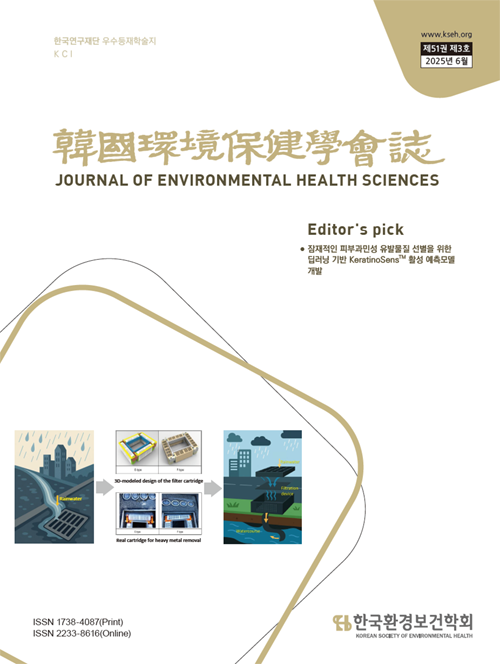- 영문명
- Assessment of Indoor Radon Concentrations in Newly Built Apartments in South Korea Over the Past Three Years: Effects of Regional, Seasonal, Architectural, and Policy-Related Factors
- 발행기관
- 한국환경보건학회
- 저자명
- 신승호(Seong-Ho Shin) 서성철(Sung Chul Seo)
- 간행물 정보
- 『한국환경보건학회지』제51권 제3호, 149~156쪽, 전체 8쪽
- 주제분류
- 공학 > 환경공학
- 파일형태
- 발행일자
- 2025.06.30
4,000원
구매일시로부터 72시간 이내에 다운로드 가능합니다.
이 학술논문 정보는 (주)교보문고와 각 발행기관 사이에 저작물 이용 계약이 체결된 것으로, 교보문고를 통해 제공되고 있습니다.

국문 초록
Background: Indoor radon exposure is a major public health concern in South Korea, particularly in newly constructed apartment buildings where ventilation systems and airtight structures influence radon accumulation. Despite the performance of previous studies, there is limited large-scale evidence addressing seasonal, regional, and architectural variations in radon concentration in recently built housing.
Objectives: This study aims to evaluate indoor radon concentrations in newly constructed multi-family housing units across South Korea and identify key factors influencing radon levels, including region, season, floor level, housing size, and policy-related construction standards.
Methods: Indoor radon was measured in 1,239 housing units constructed between 2021 and 2023 using standardized protocols. Measurement data were categorized by administrative region, season (warm vs. cold), floor group (low, mid, high), and housing size. Statistical analyses, including ANOVA and t-tests, were conducted using SPSS to determine differences and interactions among variables. The influence of the 2019 Indoor Air Quality Act revision and 2022 ventilation policy on radon levels was also examined.
Results: Radon concentrations varied significantly by region and season, with higher levels observed in the cold months. Mid-level floors showed the highest exceedance percentage compared to low and high floors. In certain regions such as Gyeonggi-do Province, some housing units exceeded the nationally recommended limit of 148 Bq/m , particularly during the winter months. Policy-driven changes in building codes showed a 3 partial association with reduced radon levels in post-implementation buildings.
Conclusions: The findings suggest that indoor radon levels in newly constructed housing are influenced by both environmental and architectural factors. These results highlight the need for region- and season-specific mitigation strategies and support the ongoing refinement of radon management policies in South Korea.
영문 초록
목차
Ⅰ. 서 론
Ⅱ. 재료 및 방법
Ⅲ. 결 과
Ⅳ. 고 찰
Ⅴ. 결 론
References
해당간행물 수록 논문
- [Editorial] 기후변화, 환경을 넘어 건강 위기로 … 환경보건 대응이 시급하다
- 한국환경보건학회지 제51권 제3호 목차
- 감염병 위기에서 AI는 어떻게 사용되었는가: COVID-19 연구동향 분석
- 도로 유출수 내 중금속 제거를 위한 카트리지형 나노영가철 필터 개발 및 평가
- 잠재적인 피부과민성 유발물질 선별을 위한 딥러닝 기반 KeratinoSens™ 활성 예측모델 개발
- 최근 신축된 국내 공동주택의 실내 라돈 농도: 지역, 계절, 건축 특성 및 정책 기준에 따른 영향 분석
- 국내 실내공기 중 생물학적 유해인자(세균, 진균) 노출 특성
- 도금폐수 내 중금속 침전 제거 및 슬러지 감량에 관한 연구
참고문헌
교보eBook 첫 방문을 환영 합니다!

신규가입 혜택 지급이 완료 되었습니다.
바로 사용 가능한 교보e캐시 1,000원 (유효기간 7일)
지금 바로 교보eBook의 다양한 콘텐츠를 이용해 보세요!



